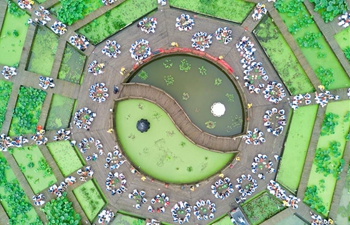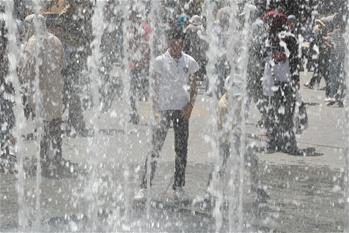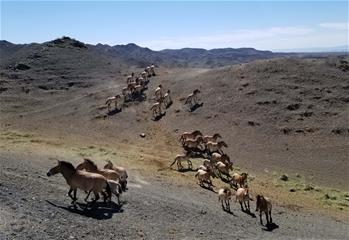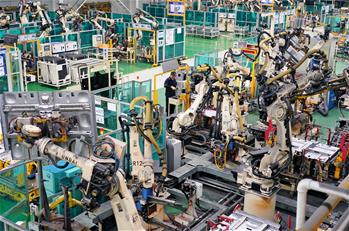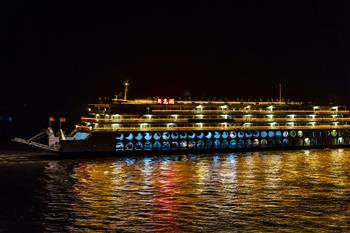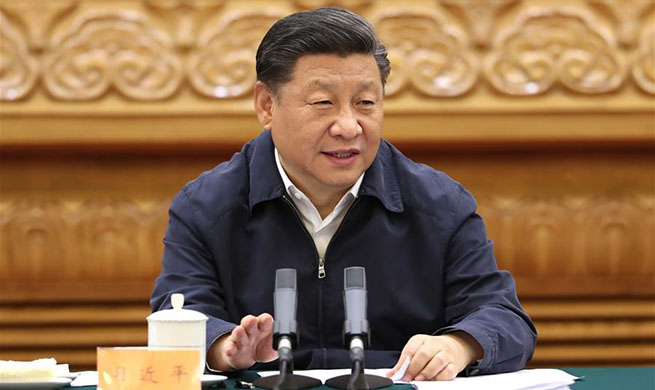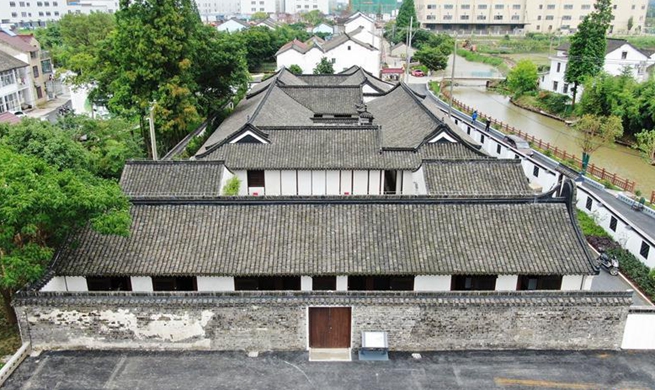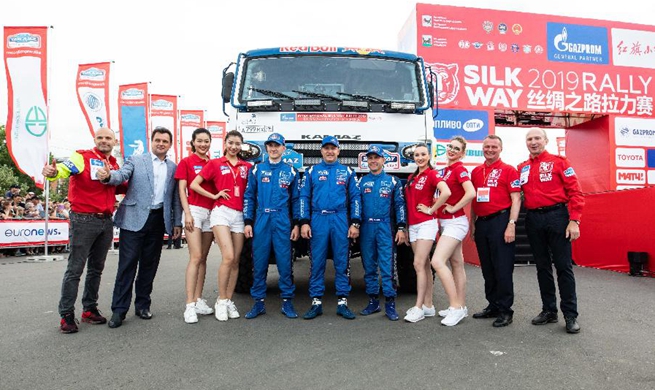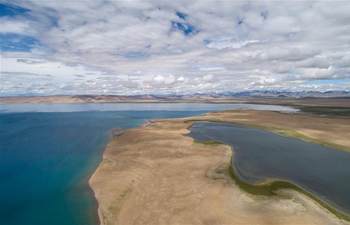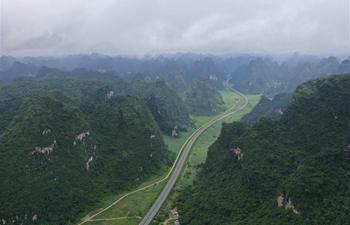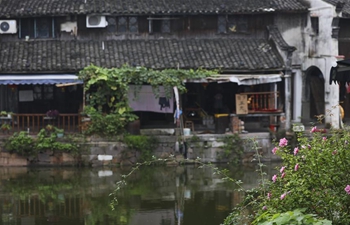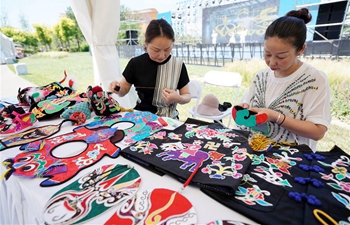By Shristi Kafle
KATHMANDU, July 7 (Xinhua) -- In a bid to save the world's highest peak Mount Qomolangma from trash, Nepal conducted a month-long cleaning campaign by collecting over 10,000 kg of rubbish from the region this spring.
The historical mega clean-up campaign coordinated by government and non-government agencies by mobilizing a dedicated Sherpa team from the base camp to four higher camps, not only collected waste but also removed four dead bodies from the roof of the world.
Instead of sending those solid waste to dump in the landfill site near the capital, those items were first segregated, processed and recycled as raw materials for various products.
"We segregated the collected materials in different categories like plastic, glass, iron, aluminum and textile. Among around 10 tons of waste received, two tons have been recycled while the remaining eight tons were soil mixed with wrappers and semi-burned items, which could not be recycled," Nabin Bikash Maharjan, the head of Blue Waste to Value, told Xinhua recently.
More than 50 people have been involved in Kathmandu-based Blue Waste to Value since 2017, which is a social enterprise dedicated to creating value from waste.
"The company established with five million Nepalese rupees investment has a business value of 30 million Nepalese rupees in just six years. But I prefer to say that we are still in the struggling phase. It's not just about generating money, it's about doing justice to the environment," the company's CEO Maharjan said.
Maharjan said that among the total waste, nearly 50 percent was glass products including the broken glasses and beer bottles, followed by a large amount of iron, particularly tin, can food and drink, textile including torn tents and clothes, polythene bags and plastic items.
"We do recycling of certain items in Kathmandu while we provide the segregated items to other recycling companies to use as raw materials for new products," Maharjan said, adding that people might not be aware that the products they use in everyday life might be made up of the waste of the world's highest peak.
According to him, it is cost-effective for manufacturing companies to mix the processed items in any new product rather than only using virgin raw materials. Such processed items are used in a variety of products from utensils to decors, plastic household appliances, clothing items to cushions, upcycling papers to compost.
Besides recycling the waste of the mountain, Maharjan's team is also working with municipalities, hospitals, hotels and different offices to maximize value from waste by recycling, reducing the amount of waste sent to landfills and by creating green jobs.
To make the Qomolangma cleanup campaign more effective, the company suggested authorities to set up an initial processing unit in the mountain area itself, so that waste can be segregated immediately and easily managed.
It will not just reduce the transportation cost, which is quite high due to the use of helicopters to transport down the waste from such high altitudes but will also help raise awareness of the importance of the environment for locals and hikers.
Though the company does not recycle the materials itself, it collaborates with another company called Moware Designs to create up-cycled glass bottle products and to sell them online.
Ujen Wangmo Lepcha from Moware Designs shared that the unique, colorful and artistic glass products are a trend recently for home, offices, restaurants and hotels. They are used as decorative items as a flower vase, candle cover, plates, travel cups, regular drinking glasses or as an accessory.
"Basically these waste products have no value in the market, so we are trying to add value and trying to reduce the waste from landfill. The products are environment-friendly and full of art," Lepcha told Xinhua.
The young lady entrepreneur said that these products, which range from 350 Nepalese rupees to 2,000 Nepalese rupees (3.2 U.S. dollars to 18.3 U.S. dollars), are bacteria free as they are sterilized. The same glass items have also been a means of livelihood for many local women who shape the trash into trendy designs.
According to Nepal's regulation, every foreigner needs to pay 11,000 U.S. dollars as royalty while a Nepali climber has to pay 710 U.S. dollars to scale the 8,848-meter-tall mountain.
Besides, the government collects garbage deposits from the climbers with a provision of refund after they bring back at least 8 kg of garbage. High altitude guides claimed that piles of trash are still found in the mountain with an adverse impact on health and the environment.
The Nepal Mountaineering Association said the government should come up with a new policy to have a separate fund, which can be used to continue the cleanliness campaign to make the mountaineering industry sustainable.
"We can establish a separate fund, where a certain percent of insurance amount of dead climbers can be deposited. The fund can be both used for removal of dead bodies and for the cleanliness of the mountain. We are ready to support the government for this," said Santa Bir Lama, president of the Nepal Mountaineering Association.
